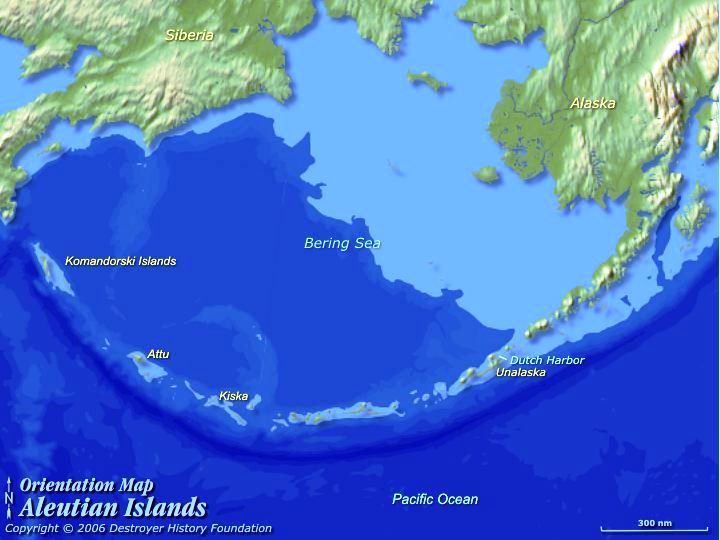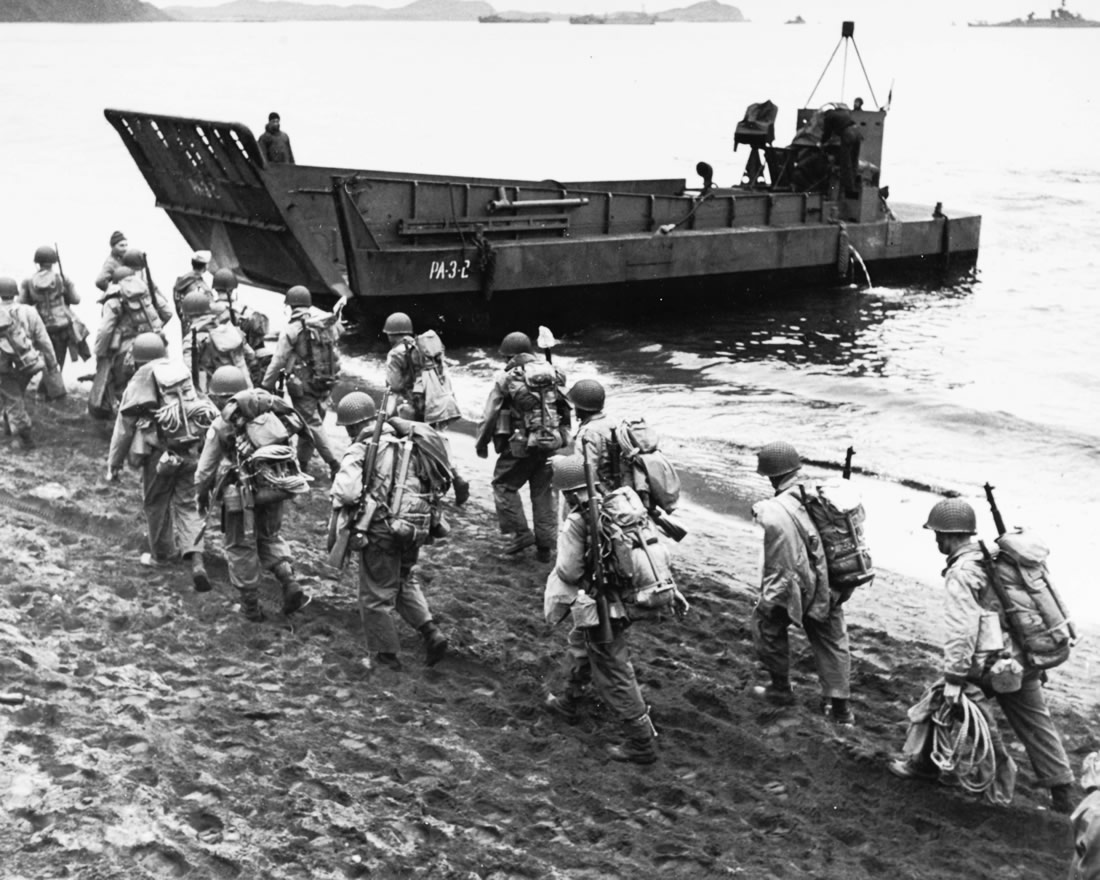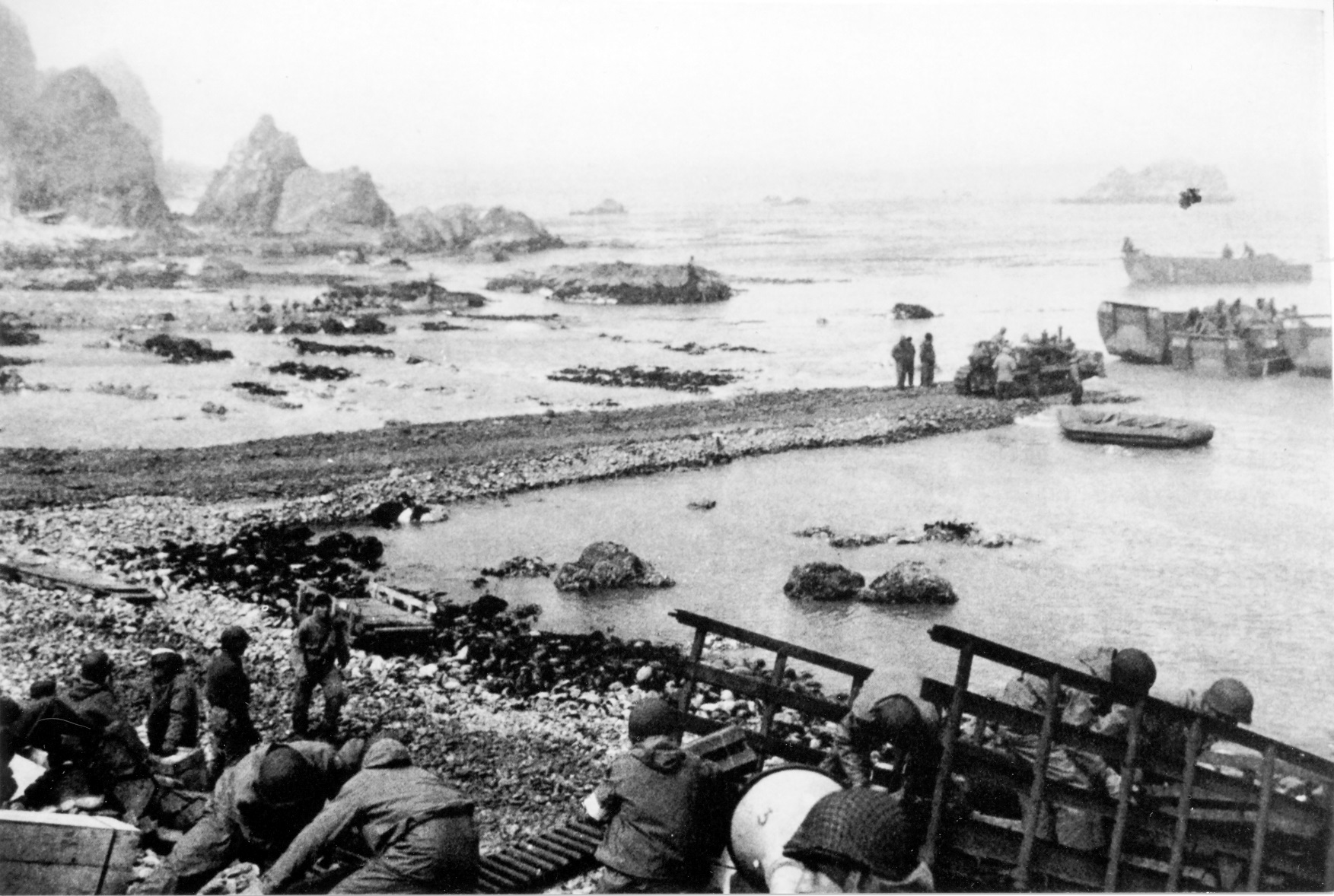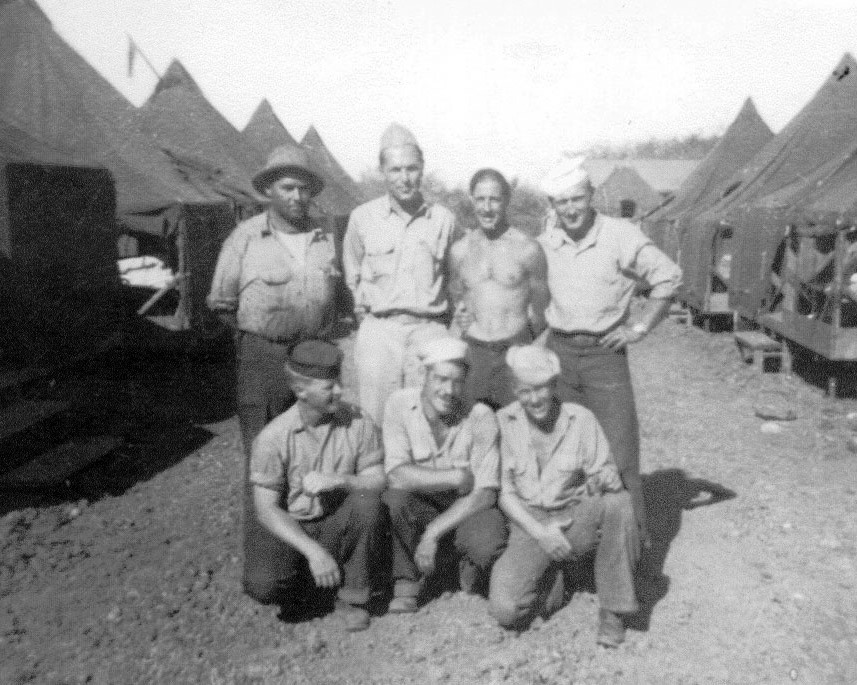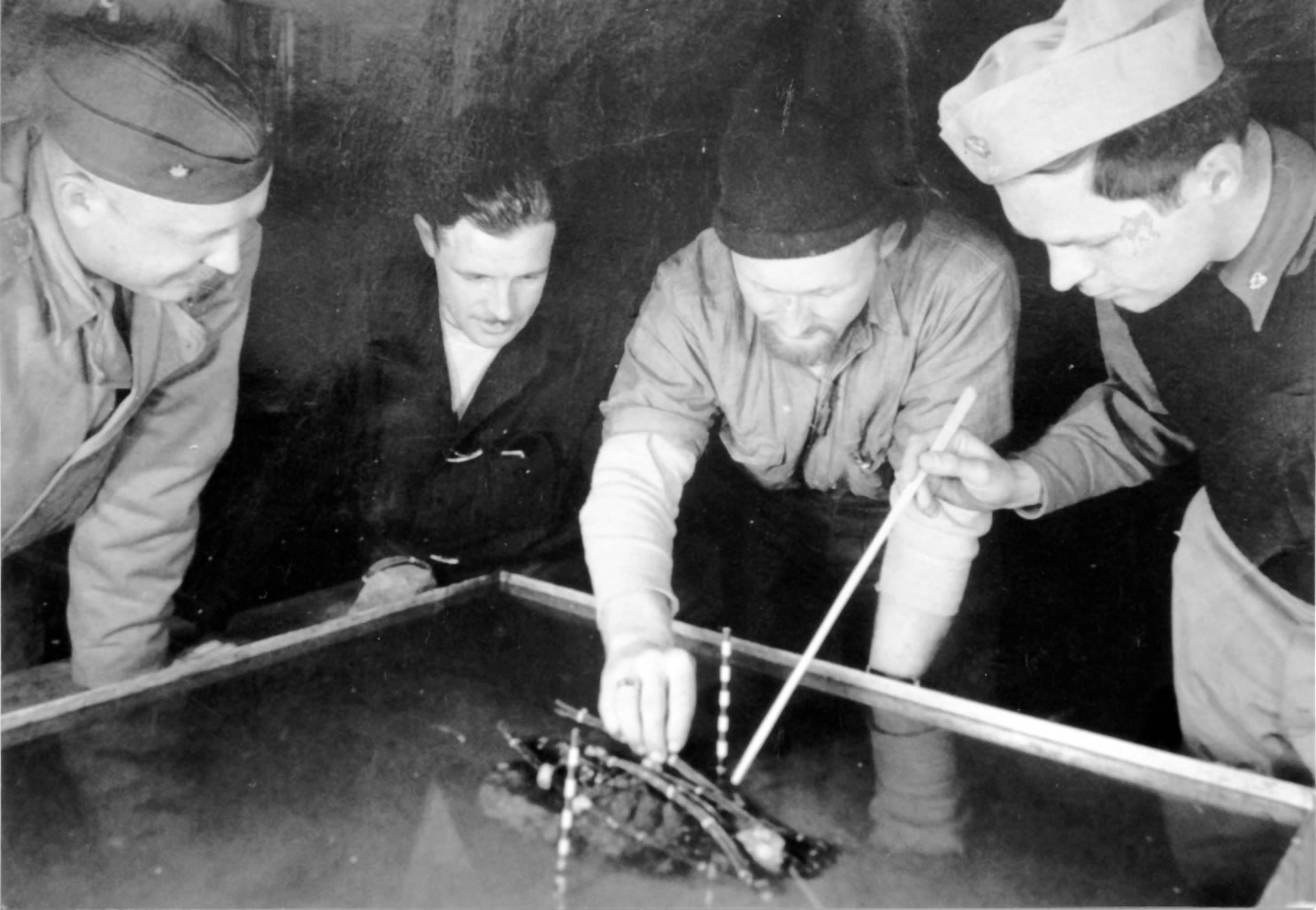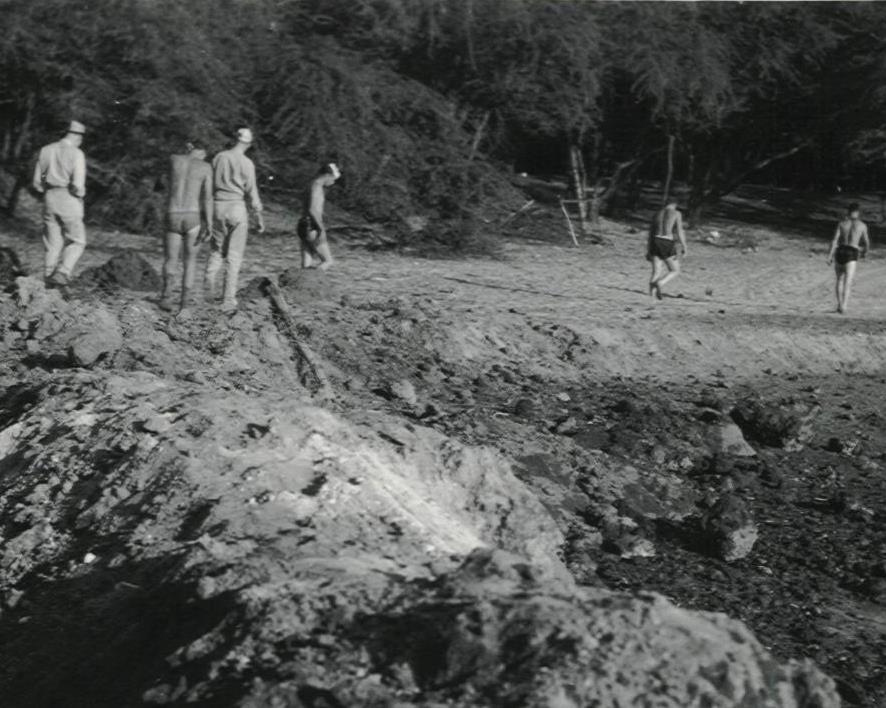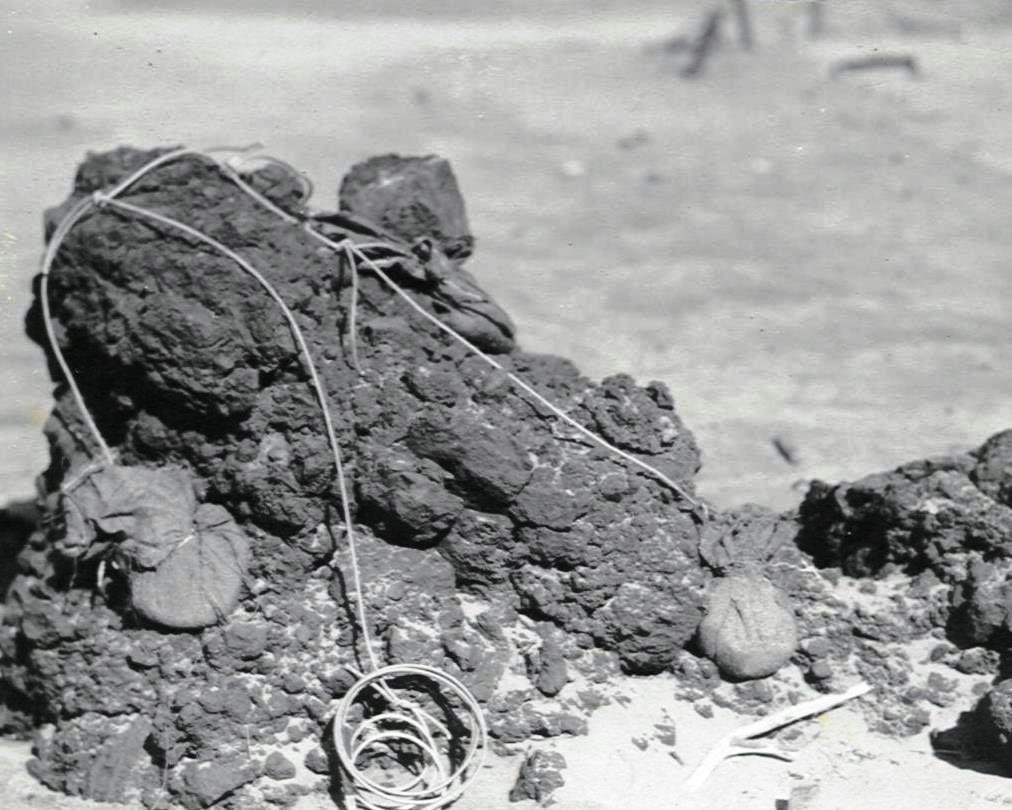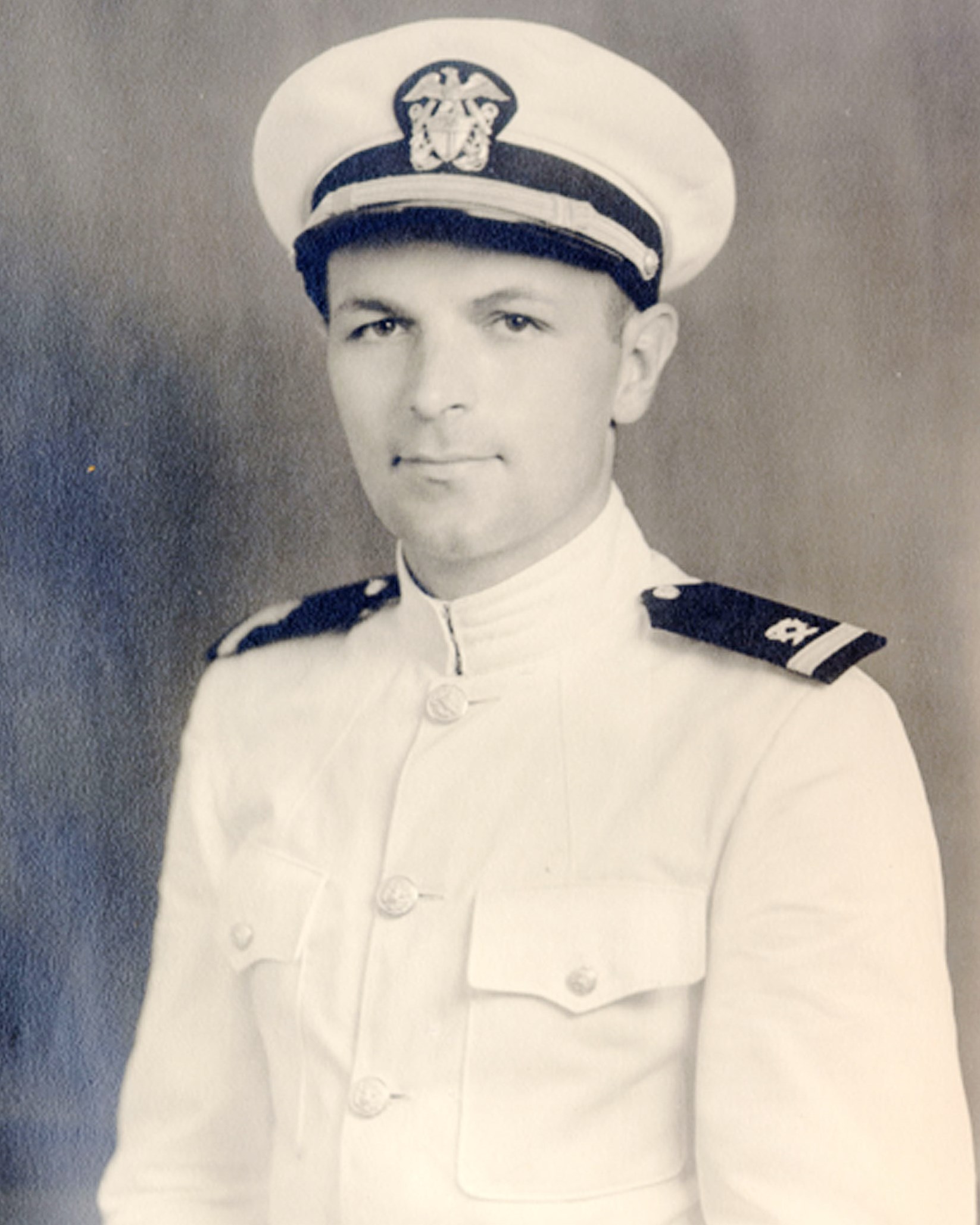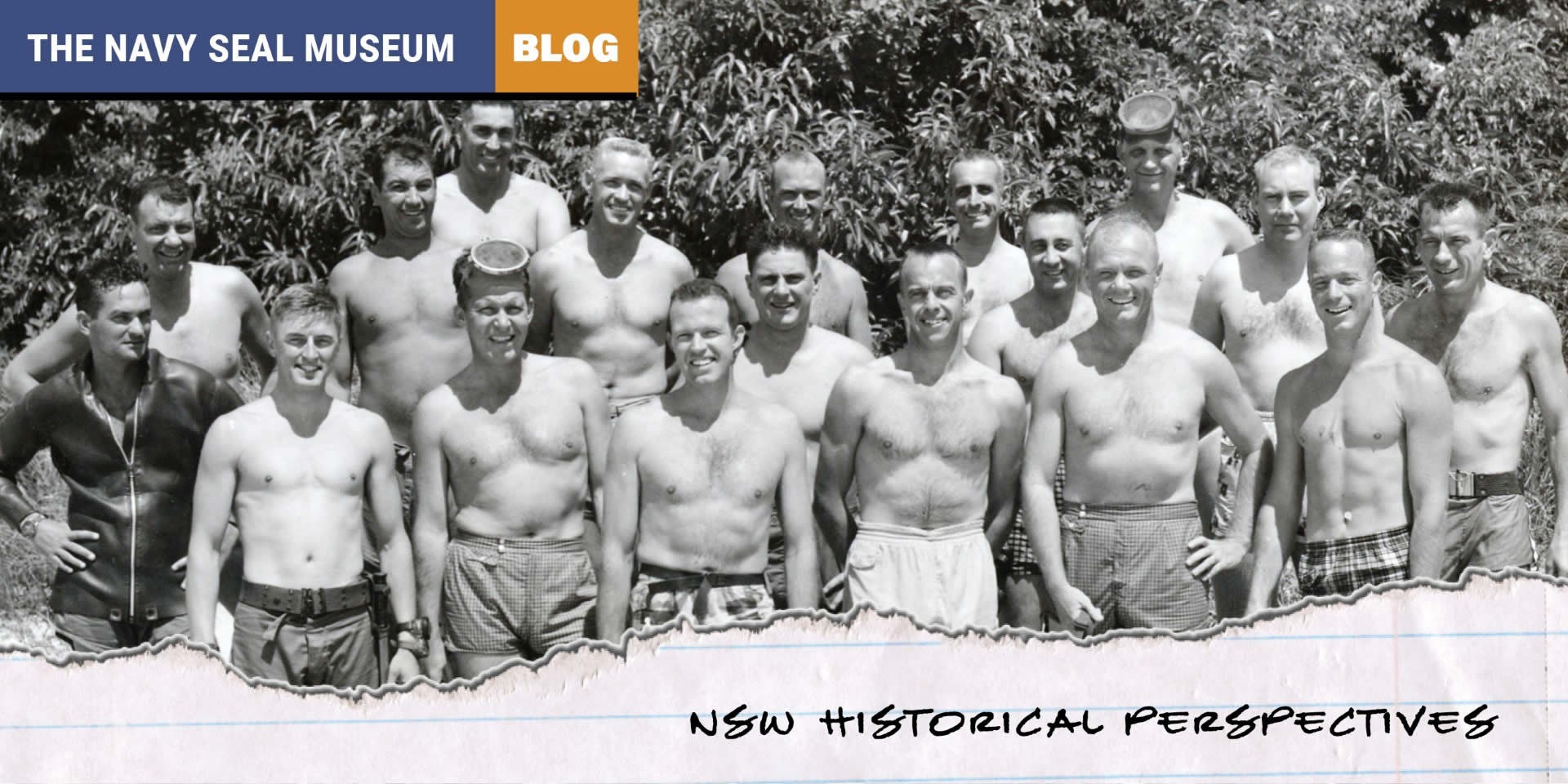
The First Deployed Naval Combat Demolition Unit
The Aleutian Islands Campaign
During early World War II, the Aleutian Islands were part of the United States Territory of Alaska. They were invaded by the Japanese Navy as part of their Aleutian Islands Campaign during 3 and 4 June 1942. They bombed Dutch Harbor in the city of Unalaska, killing 43 Americans. Some days later, an estimate of 6,000 – 7,000 Japanese troops landed on and occupied the islands of Attu and Kiska. These were the only foreign invasions of the United States during World War II, and the first foreign occupation of the United States since the War of 1812.
The Japanese surmised that control of the Aleutians would prevent a possible United States attack against them from across the Northern Pacific. Similarly, the United States reckoned that the Japanese would use these islands as forward-operating bases from which to launch air strikes on cities like Anchorage, Seattle, Portland, or Los Angeles. The islands also had strategic value, because of their potential to control Northern Pacific transportation routes.
A small Japanese force occupied Attu and Kiska, where the remoteness of the islands and the challenges of weather and terrain delayed a larger United States and Canadian air and amphibious assault to remove Japanese forces from both islands. An attack on Attu was launched on 11 May 1943 and completed on 29 May. The attack on Kiska was launched on 15 August 1943 only to discover that the Japanese had withdrawn from the island.
The Kiska operation would become significant milestone the history of Naval Special Warfare, since it was the first combat assignment for a Naval Combat Demolition Unit. Designated NCDU 152-A1, Ensign Edwin S. Williams and his five men were the first combat-deployed NCDU. They were members of the first NCDU class being training at the Amphibious Training Base, Fort Pierce, Florida beginning in June in 1943. The men were deployed from Fort Pierce on 2 July 1943. They were bound for the Naval Air Station at Mare Island, California under secret orders for further transport to the Aleutians. Because of a snafu upon arriving at Mare Island, however, the men never made it to Kiska in time for the assault. Nevertheless, they were able to assist significantly for the next three months; performing rock blasting and cold-water tasks at Adak. The men were subsequently ordered to Hawaii, where they were merged into the first Underwater Demolition Teams organized in the Pacific during December 1943.
NCDU 152-A1 under Ensign Edwin S. Williams was the first combat-deployed NCDU. The names of the men are known, but not in the order of this photograph: CCM Sulo D. Mansonen. BM1c Andy Oddstad, MM1c Charles (Lionel) Green, CM1c C.R. Nottingham, MM2c Tom Lambert, and S2c Marvin P. Gross.
Kiska explosives planning (l-r): LCDR Chidester, Henry L. Green, Andres Oddstd, Ensign Edwin S. Williams.
KISKA and Edwin S. Williams, Jr.
Edwin S. Williams, Jr. began training with the first Naval Combat Demolition Unit (NCDU) class in June 1943. He didn’t think he would make it home from the war. More than 50 years later, he put his memories in an unpublished essay. He died in January at the age of 88. This excerpted portion of his essay gives prospective to NCDU #1’s (i.e., NCDU 152-A1) participation in operations at the Aleutian Islands, where he and his men had been sent directly from Fort Pierce.
KISKA August 15, 1943
The ninth Amphibious Force was arrayed off the southern coast of Kiska, battle-ready to recapture this Aleutian Island, which the Japanese had occupied the previous year. Well, more or less ready. Except for a couple of major SNAFUs.
Tucked away in the middle of the gunboats, destroyers, cruisers, troop ships, LSTs, an aircraft carrier, and a battleship, the flagship was a Victory ship, which carried supplies plus something new and unusual; a seven-man crew called Naval Combat Demolition Unit or NCDU. This was, in fact, our NCDU-1, the first such unit to be assigned to an amphibious operation.
The mission of an NCDU was to make an up-close inspection of the approaches to the proposed landing beach to spot obstacles such as rocks, coral reefs, concrete blocks, barbed wire or anything that would impede or slow down the LCVPs that were to carry the first wave of assault troops onto the beach. It was then the job of the NCDU to remove these obstacles with explosives. Protection for the NCDUs would be provided by the LCIG gunboats [Landing Craft, Infantry (Guns)] that would keep up a steady barrage of 20 and 40 mm onto the beach.
NCDU equipment consisted of a 10-foot inflatable rubber boat, some oars, paddles, wet suits, facemasks, and a supply of high explosives, detonators and fuses. Since the NCDU had to operate before the first wave of troops was brought in, NCDU equipment had to be unloaded first. But it was discovered on D-minus 1 day that all of the NCDU equipment had been loaded first and sat at the bottom of tons of supplies, tents, clothing, food, and a jeep. That was SNAFU number one. The second SNAFU compensated for the first, since there was no one on the island we were about to invade.
After several months and several million dollars spent in reconnaissance, planning, preparation, and assembling a task force, the enemy had gone. In spite of our complete control of the sea and air, the Japanese had without our knowledge evacuated 6,000 troops and all their equipment. Faces were red; but lives were saved.
Amphibious Force Nine was sent to the U.S. Naval Base on the Aleutian Island of Adak, ostensibly for R&R (Rest and Relaxation), but obviously to mark time while Washington decided what kind of a face to put on this embarrassing situation.
Note: After operations at Adak, this NCDU was redirected to Maui and subsumed in to UDT-4. The remainder of Mr. Williams essay involves UDT-4 actions and activities in the Pacific.

